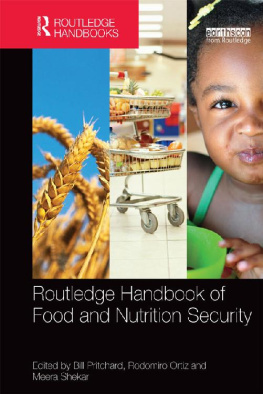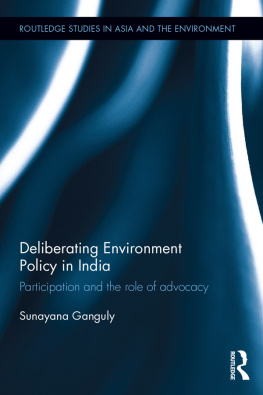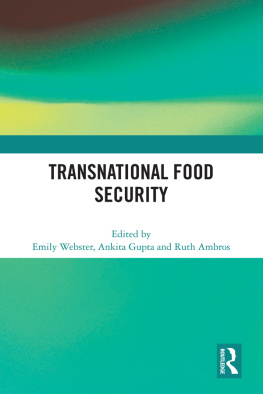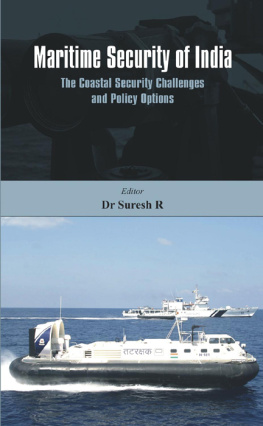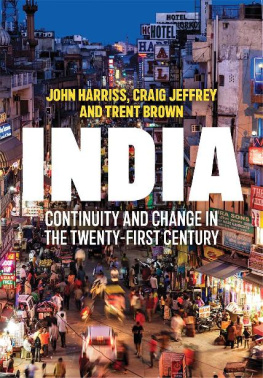FEEDING INDIA
Food security is one of the twenty-first century's key global challenges, and lessons learned from India have particular significance worldwide. Not only does India account for approximately one quarter of the world's undernourished persons, it also provides a worrying case of how rapid economic growth may not provide an assumed panacea to food security.
This book takes on this challenge. It explains how India's chronic food security problem is a function of a distinctive interaction of economic, political and environmental processes. It contends that under-nutrition and hunger are lagging components of human development in India precisely because the interfaces between these aspects of the food security problem have not been adequately understood in policymaking communities. Only through an integrative approach spanning the social and environmental sciences are the fuller dimensions of this problem revealed. A well-rounded appreciation of the problem is required, informed by the FAO's conception of food security as encompassing availability (production), access (distribution) and utilisation (nutritional content), as well as by Amartya Sen's notions of entitlements and capabilities.
Bill Pritchard is Associate Professor of Human Geography in the School of Geosciences, University of Sydney.
Anu Rammohan is Professor of Economics in the School of Business, University of Western Australia.
Madhushree Sekher is Professor and Chairperson of the Centre for Social Exclusion and Inclusive Policies, Tata Institute of Social Sciences, Mumbai.
S. Parasuraman is Director, Tata Institute of Social Sciences, Mumbai.
Chetan Choithani is a doctoral candidate in Human Geography in the School of Geosciences, University of Sydney, and a holder of the Prime Minister's AustraliaAsia Endeavour Fellowship.
The intriguing and immensely important question that motivates this book is: How can a fast growing country like India have such a large part of its population that is still malnourished? The scope of the book goes way beyond food and nutrition; it goes to the heart of the development process underway in India and introduces us to the key debates on some crucial policy issues in a lucid and open-minded way. It is a must-read for any serious student of Indian development.
Ashok Kotwal, Professor of Economics, The University of British Columbia, Canada
This important book shows how and why rapid economic growth in India has not been translated into food security for large numbers of the country's most vulnerable households. The authors convincingly show how food insecurity is not a problem of food production, or even one of food distribution; it is a problem of livelihood insecurity which, in turn, is bound up in the wider social and political structures and fissures that characterise the contemporary Indian political economy. It is thus a sobering book: addressing under-nutrition is proving to be a lot harder than promoting economic growth.
Jonathan Rigg, National University of Singapore
FEEDING INDIA
Livelihoods, entitlements and
capabilities
Bill Pritchard, Anu Rammohan,
Madhushree Sekher, S. Parasuraman
and Chetan Choithani
First published 2014
by Routledge
2 Park Square, Milton Park, Abingdon, Oxon OX14 4RN
Simultaneously published in the USA and Canada
by Routledge
711 Third Avenue, New York, NY 10017
Routledge is an imprint of the Taylor & Francis Group, an informa business
2014 Bill Pritchard, Anu Rammohan, Madhushree Sekher, S. Parasuraman and Chetan Choithani
The right of Bill Pritchard, Anu Rammohan, Madhushree Sekher, S. Parasuraman and Chetan Choithani to be identified as authors of this work has been asserted by them in accordance with sections 77 and 78 of the Copyright, Designs and Patents Act 1988.
All rights reserved. No part of this book may be reprinted or reproduced or utilised in any form or by any electronic, mechanical, or other means, now known or hereafter invented, including photocopying and recording, or in any information storage or retrieval system, without permission in writing from the publishers.
Trademark notice: Product or corporate names may be trademarks or registered trademarks, and are used only for identification and explanation without intent to infringe.
British Library Cataloguing-in-Publication Data
A catalogue record for this book is available from the British Library
Library of Congress Cataloging-in-Publication Data
Pritchard, Bill.
Feeding India: livelihoods, entitlements and capabilities / Bill Pritchard,
Anu Rammohan, Madhushree Sekher, S. Parasuraman and Chetan Choithani.
pages cm.
Includes bibliographical references and index.
1. Food securityIndia. 2. Food supplyIndia.
3. PovertyIndia. 4. AgricultureIndia. I. Title.
HD9016.I42P73 2013
338.1954dc23
2013007885
ISBN: 978-0-415-52966-2 (hbk)
ISBN: 978-0-415-52967-9 (pbk)
ISBN: 978-0-203-11762-0 (ebk)
Typeset in Bembo
by Swales & Willis Ltd, Exeter, Devon
CONTENTS
| AAY | Antodaya Anna Yojana (household income classification category in PDS) |
| ABC Index | Achievements of Babies and Children Index |
| APL | Above Poverty Line (household income classification category in PDS) |
| BJP | Bharatiya Janata Party |
| BMI | Body Mass Index |
| BPL | Below Poverty Line (household income classification category in PDS) |
| CCT | Conditional Cash Transfer |
| CIFI | Composite Index of Food Insecurity |
| CIMMYT | Centro Internacional de Mejoramiento de Maiz y Trigo |
| CT | Cash Transfer |
| DCT | Direct Cash Transfer |
| DfID | Department for International Development (UK) |
| FAO | Food and Agriculture Organisation (of the United Nations) |
| FSR | Farm Systems Research (methodology) |
| ha | hectare |
| HDI | Human Development Index |
| HVH | High-Value Horticulture |
| HYV | High-Yield Variety |
| ICDS | Integrated Child Development Scheme |
| IFPRI | International Food Policy Research Institute |
| IHD | Institute for Human Development |
| ILO | International Labour Organisation |
| kj | kilojoule |
| MDER | Minimum Dietary Energy Requirements |
| MDG | Millennium Development Goal |
| MDMS | Midday Meal Scheme |
| MESA | Portuguese acronym for the Government of Brazil's Extraordinary Ministry of Food Security and Fight Against Hunger |
| MGNREGA | Mahatma Gandhi National Rural Employment Guarantee Act |
| MGNREGS | Mahatma Gandhi National Rural Employment Guarantee Scheme |
| MSP | Minimum Support Price |
| NAC | National Advisory Council (Government of India) |


